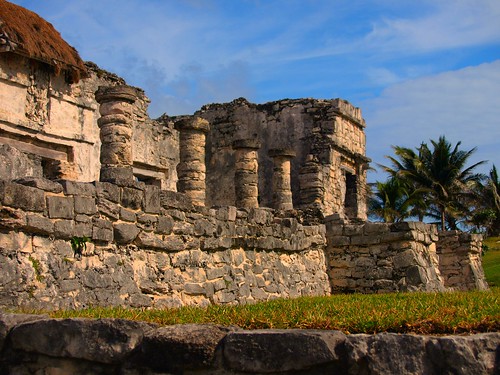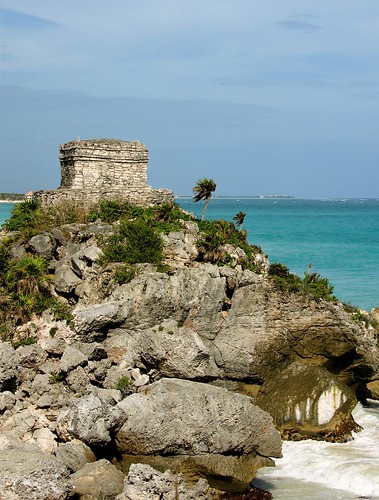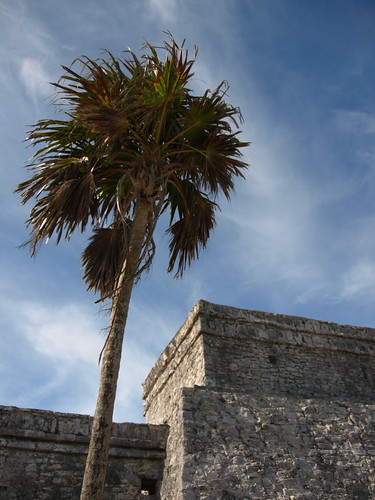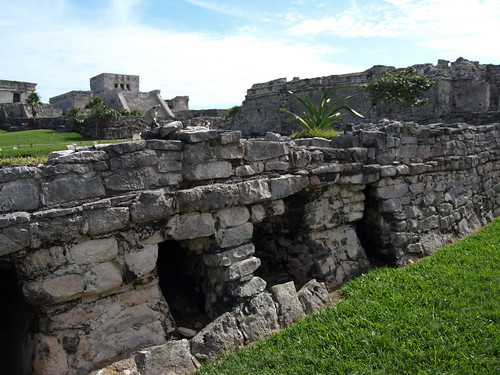
Mayan Ruins © 2008 Bo Mackison
The Mayan ruins at Tulum, Mexico.
The House of the Columns is more complex than most structures at the site. It’s a palace-like structure with four rooms whose principal entrance faces South. Six columns support the roof of the main room and there’s also a roofed sanctuary with altars. Mayans did perform live human sacrifices to their gods with willing volunteers. (Anyone up for a nice volunteer job?)
All of Tulum’s buildings were open to the public until 9 years ago. They were closed at that time due to problems with graffiti despoilation on the interior walls done by stupid people.
These renowned archeological sites were constructed in the classic era between 650 AD and 1450 AD; most of the remaining structures are dated from 1250 to 1450 AD. Until the 16th century, they were inhabited towns. Then the Europeans came. The Spanish conquered the Mayans in 1518, bringing to the Mayans devastating Old World diseases. By 1521, the Mayans had abruptly abandoned their way of life in Tulum and other sites in Mexico, and they disappeared in a short period of time.













